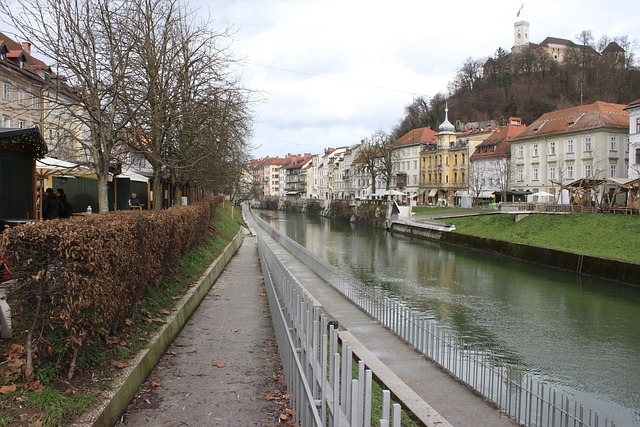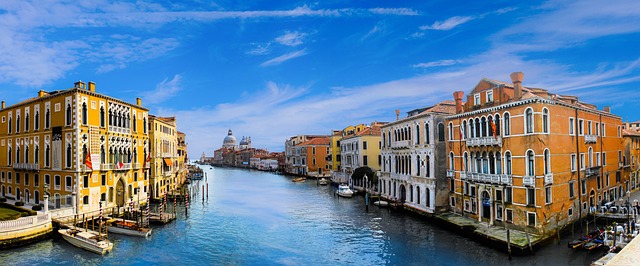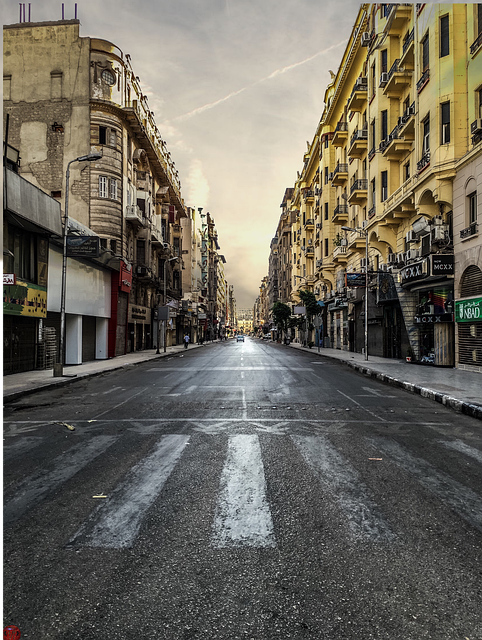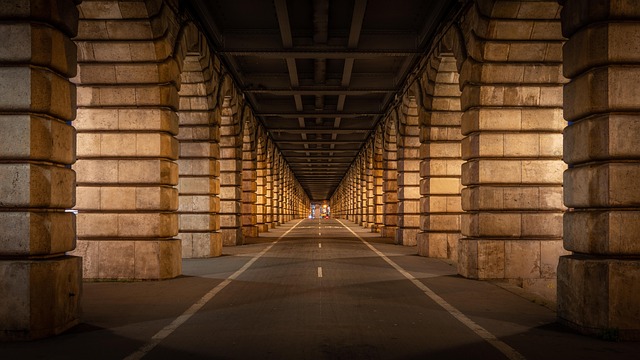Karachi, Pakistan's economic hub, strictly enforces construction bylaws to maintain its unique character, promote orderly development, and prioritize safety. These regulations, covering zoning, building heights, environmental impact, and safety standards, guide developers and residents alike. Jinnah Avenue, a vital urban connector, showcases Karachi's diverse commercial activities and cultural heritage while highlighting the need for balanced development. Through strict adherence to construction bylaws, Karachi ensures a harmonious blend of residential, commercial, and industrial spaces, preserving its heritage and creating a vibrant, livable cityscape. Case studies of successful projects along Jinnah Avenue demonstrate how stringent regulations can foster architectural excellence while driving economic growth and preserving cultural heritage.
Karachi, Pakistan’s vibrant metropolis, is undergoing continuous urban transformation. At the forefront of this evolution is Jinnah Avenue, a bustling thoroughfare that has become a hub for construction and development. Understanding Karachi’s stringent construction bylaws is crucial for any project along this iconic avenue. This comprehensive guide delves into the regulations shaping the cityscape, impacting local initiatives, and outlining the permitting process for builders. From successful case studies to navigating legalities, discover how these measures contribute to Karachi’s evolving skyline.
- Understanding Karachi's Construction Bylaws: A Comprehensive Guide
- The Role of Jinnah Avenue in Urban Development
- Key Regulations and Their Impact on Local Projects
- Permitting Process: Step-by-Step Breakdown for Builders
- Case Studies: Success Stories Shaping Karachi's Skyline
Understanding Karachi's Construction Bylaws: A Comprehensive Guide

Karachi, as Pakistan’s economic hub, has stringent construction bylaws in place to ensure orderly development and maintain the city’s unique character. These regulations are a comprehensive guide for anyone looking to construct or renovate within the city limits. The laws cover various aspects, from zoning and building height restrictions to environmental considerations and safety standards. Understanding these bylaws is crucial for both developers and residents, as they play a vital role in shaping the urban landscape of Karachi.
The construction process in Karachi demands meticulous planning and adherence to strict guidelines. Zoning regulations dictate the permitted uses of different areas, ensuring a harmonious blend of residential, commercial, and industrial spaces. Building height limits preserve the city’s skyline while allowing for efficient use of land. Additionally, environmental impact assessments are mandatory for large-scale projects, highlighting Karachi’s commitment to sustainable development. These bylaws not only protect the city’s heritage but also aim to mitigate potential hazards, ensuring the safety and well-being of its diverse population.
The Role of Jinnah Avenue in Urban Development

Jinnah Avenue, a bustling thoroughfare in Karachi, serves as a vital artery for the city’s urban development. Its strategic location connects diverse neighborhoods, fostering economic growth and social interaction across the metropolis. As one of the primary avenues in the heart of Karachi, it hosts a vibrant tapestry of commercial activities, from bustling markets to modern business districts, contributing significantly to the city’s dynamic economy.
The avenue’s role extends beyond commerce; it also acts as a cultural hub, reflecting the diverse heritage of Karachi. Its landscape is dotted with historical landmarks and architectural marvels that tell the story of the city’s transformation over time. In the world of construction bylaws, Jinnah Avenue presents unique challenges and opportunities, requiring careful navigation to balance development with preserving the avenue’s cultural significance in the vibrant cityscape of Karachi.
Key Regulations and Their Impact on Local Projects

In the bustling metropolis of Karachi, the construction bylaws of Jinnah Avenue present a comprehensive framework that significantly influences local projects. Among the key regulations, height restrictions and setback requirements play a pivotal role in shaping the urban landscape. These measures ensure that buildings align with the city’s aesthetic and functional goals, preserving the balanced tapestry of the neighborhood.
The impact of these regulations is profound. For developers and architects, they offer a challenge to create innovative designs that adhere to the bylaws while enhancing the quality of life for residents. By doing so, projects are compelled to integrate sustainable practices, efficient use of space, and aesthetically pleasing facades—all contributing to Karachi’s evolving urban identity. This meticulous navigation of the by-laws promises to revolutionize the city’s construction landscape, making it a vibrant and livable place for all its folks.
Permitting Process: Step-by-Step Breakdown for Builders

In Karachi, construction bylaws on Jinnah Avenue are designed to ensure structural integrity and safety for all residents. The permitting process for builders is a crucial step in this regard, serving as a bridge between ambitious projects and reality.
It begins with an application submission to the local authority, detailing the proposed construction project. This includes blueprints, architectural plans, and engineering specifications. Once submitted, officials review these documents, assessing their compliance with bylaws covering zoning, building codes, and environmental standards specific to Jinnah Avenue. Following approval, builders receive a permit, authorizing them to commence construction in Karachi.
Case Studies: Success Stories Shaping Karachi's Skyline

In the vibrant city of Karachi, construction bylaws play a pivotal role in shaping its skyline and urban development. Case studies of successful projects along Jinnah Avenue serve as inspiring examples of how stringent yet flexible regulations can lead to remarkable architectural achievements. These stories highlight the city’s evolving landscape, where modern marvels coexist with historical landmarks.
Each project, from residential complexes to commercial hubs, has contributed to Karachi’s unique identity. By adhering to construction bylaws, developers have not only created visually appealing structures but also ensured sustainable and safe living environments for residents. These success stories demonstrate that balanced urban planning can foster economic growth while preserving the city’s cultural heritage, making Karachi a true testament to architectural excellence in Pakistan.
Karachi’s construction bylaws, as outlined in this comprehensive guide, play a pivotal role in shaping the city’s urban landscape. Jinnah Avenue, a key thoroughfare, exemplifies how these regulations influence and drive development. By understanding the permitting process and key regulations, builders can navigate Karachi’s dynamic environment effectively. The case studies featured highlight successful projects that have not only transformed the skyline but also set benchmarks for future endeavors, showcasing the positive impact of adhering to stringent yet essential construction bylaws in the vibrant city of Karachi.

Leave a Reply